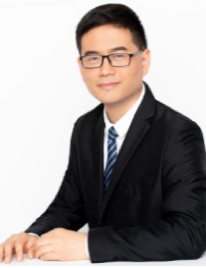Study on protective material of zirconium alloy and structure evolution
Junhua Hu*, Guoqin Cao*, Nanxiang Feng
Zhengzhou University, Zhengzhou, 450001, China
EXTENDED ABSTRACT: Zirconium alloys are a key material for nuclear fuel casing. The coating technology improves its stability in the in-stack environment. We designed the Zr-Si multilayer film structure to confirm the competitive formation of amorphous passivation films at the Zr-Si-O interface and the multi-level protection effect, see Figure 1 (a, b). Designing Zr-Si amorphous coatings achieves a gradual transition of the surface oxide film from a pseudo-binary system to a Zr-Si-O single-phase amorphous, achieving a self-reinforcing effect during service, see Figure 1c. Designing zirconium-silicon based multi-principal high-entropy coatings, Figure 1d shows that the high-entropy amorphous forms an Si-rich amorphous high-entropy oxide layer with superb corrosion resistance under high temperature and pressure water environments. At 900°C, the high entropy coating transforms into an amorphous domain-limited high entropy nanocrystalline oxide (Fig. 1e, f). The elevated silicon content achieves a layered structure with an external high entropy oxide layer and an internal alumina layer. With a similar change path at 800-1000°C oxidation, the oxide films are structurally intact and exhibit very slow oxidation kinetic behaviour. This has significant implications for the selection of protection paths for high entropy amorphous coatings in more demanding high temperature steam environments (800-1200°C).

Fig. 1 (a,b) Multi-layer film structure for high temperature oxidation; (c) Zr-Si coating structure; (d-f) High entropy coating layered oxidation structure.

Professor Hu Junhua is currently a Distinguished Professor in Henan Province. He has presided over more than ten projects of national funds, military projects and major special projects in Henan Province. He has published more than 100 SCI papers. He has published two monographs in English. More than 20 patents have been granted. Currently, he is also a youth editorial board member of 《Journal of Nonferrous Metals》, 《Surface Engineering》 and 《International Journal of Minerals, Metallurgy and Materials》.